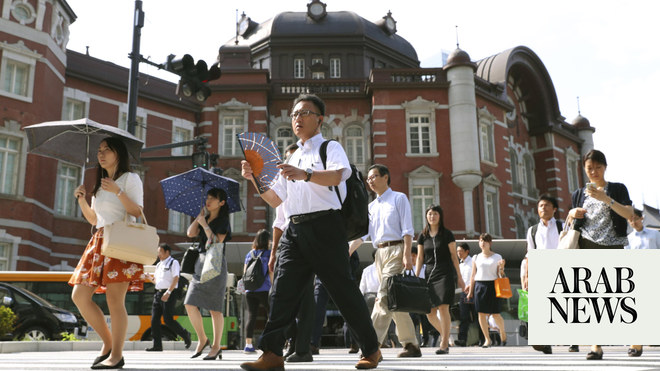SACRAMENTO, Calif.: Scorching temperatures were reported across parts of California on Tuesday, and the weather was expected to worsen in parts of the United States during the Independence Day holiday week. Nearly 90 million people were under a heat advisory.
The National Weather Service said the heat was caused by a ridge of high pressure just off the West Coast and a separate ridge that prompted heat warnings and advisories in Kansas, Missouri and the Gulf of Mexico.
California’s capital, Sacramento, is under a heat warning through Sunday evening. Temperatures are predicted to reach 105 to 115 degrees Fahrenheit (40.5 to 46.1 Celsius).
John Mendoza, 35, called it a “hot fire hose” as he strolled through the Capitol Tuesday with an iced coffee in hand. By 9 a.m., he had already been in the pool once — and planned to return later that day.
“I felt like I had to go into the water,” he said.
About 70 miles (113 kilometers) north of Sacramento, crews were working in scorching conditions battling a wildfire in Butte County that had forced the evacuation of about 13,000 people in and around Oroville. The blaze, dubbed the Thompson Fire, broke out before noon and sent up a huge plume of smoke that quickly grew to more than 3 square miles (7.7 square kilometers) by evening, beyond containment.
Firefighters lined roads trying to prevent the flames from reaching homes while helicopters dropped water on the rapidly spreading blaze.
The governor’s office announced late Tuesday that federal funding had been approved to help fight the wildfires. Earlier this week, Gov. Gavin Newsom activated the State Operations Center to coordinate California’s response, dispatch mutual aid and support local communities as they respond to threats from wildfires and excessive heat.
As temperatures rose in Sacramento, Katherine Powers sought shelter in the shadows of Cathedral Square. Powers, who is homeless, sipped a soda, her bare feet on the shady sidewalk.
Powers said she borrowed the shoes from a friend. She said she hasn’t visited any of the nine “cooling centers” in Sacramento County yet because it was difficult to take all the stuff she was carrying with her.
“I’ll just go to a park with a fountain to cool off, sit in the shade and just pour water on myself, basically,” she said. “There’s not much I can do.”
Darlene Crumedy, a Fairfield resident, said she doesn’t use air conditioning because it’s too expensive.
“I feel good, I have 100 fans,” she said, adding that she tries to stay at home and drink cold water.
An analysis by The Associated Press found that heatwaves killed more than 2,300 people in the United States last year, a record. That number is likely a gross underestimate, dozens of experts told the AP.
Dr. Arthur Jey, an emergency room physician at Sutter Health in Sacramento, told reporters that in addition to wearing a hat and loose clothing, staying hydrated and watching for signs of heatstroke, it is also important to take shelter from the heat.
“With heatstroke, it looks like a stroke,” Jey said, describing symptoms that can include unusual behavior, severe headaches, blurry vision, profuse sweating and then its disappearance.
“And that’s a really big deal,” Jey said. “So we want to prevent them from even getting close to heatstroke.”
California’s heatwave was expected to spread from north to south during the week, with the worst concentrated in interior areas, including the Sacramento and San Joaquin valleys and southern deserts. But warnings extended to areas just off the coast.
Weather forecasters predict that temperatures in San Francisco, known for its cool summers, will reach about 31°C (80°F) in the city centre on Tuesday, but will reach about 18.3°C (65°F) in Ocean Beach, forecasters said.
“A dome of high pressure will remain over California for at least a week, and longer-range forecasts suggest that timeline may even be optimistic,” the Bay Area weather office wrote.
The heat came with gusty, dry winds in the northern part of the state, where utility Pacific Gas & Electric implemented public safety power shutoffs in parts of 10 counties to prevent downed or damaged power lines from igniting wildfires.
About 12,000 customers were notified that their power could be cut off and were also given information about where they could buy ice, water, snacks, Wi-Fi and other essentials, PG&E said.
California has been hit by a series of spring and early summer fires that fed on abundant grasses left by back-to-back wet winters. The largest blaze currently burning, dubbed the Basin Fire, is 17 percent contained after charring more than 21 square miles (54 square kilometers) of the Sierra National Forest in eastern Fresno County since it ignited June 26.

